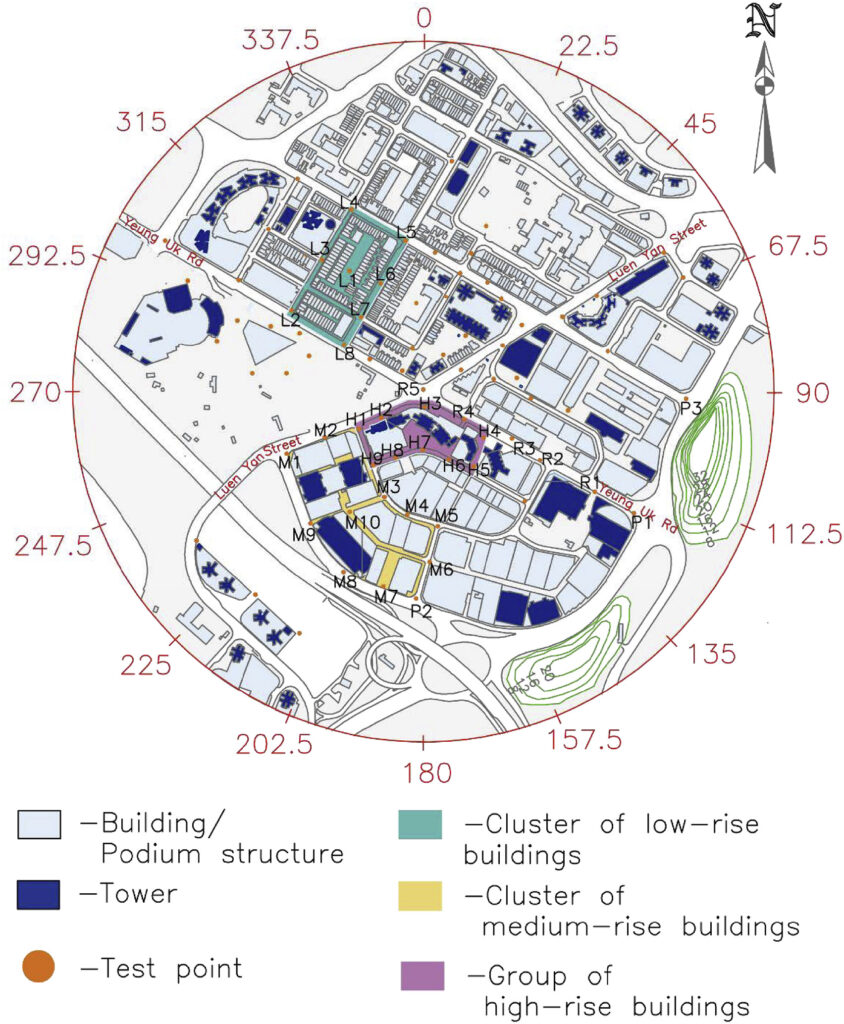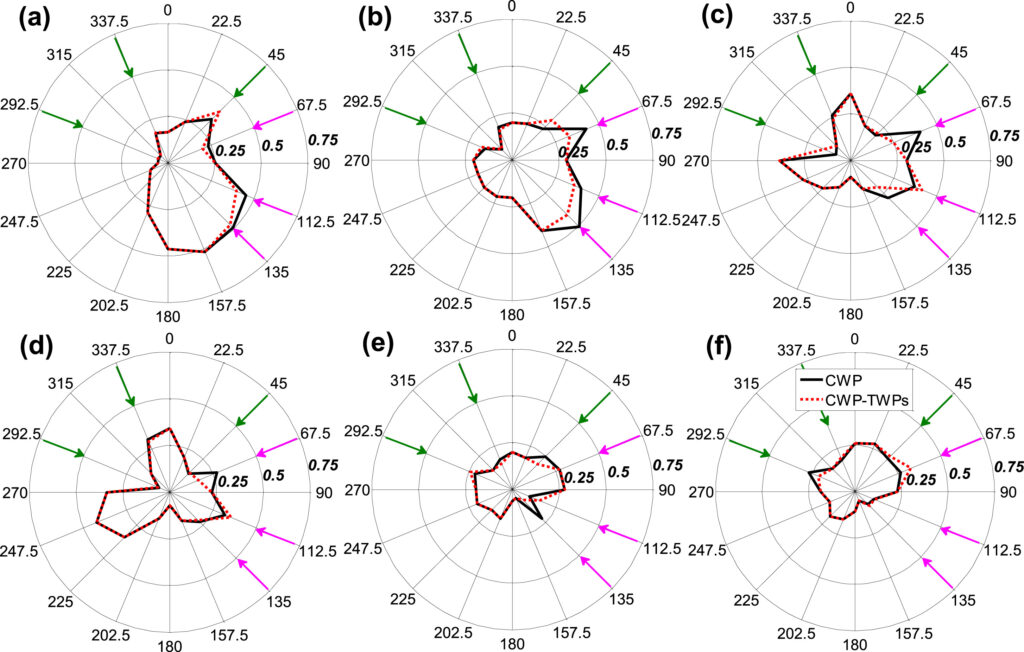Integrating twisted wind profiles to Air Ventilation Assessment (AVA)
Twisted wind flows generated by the complex terrain of Hong Kong induce two types of complication to Air Ventilation Assessment (AVA), first, imposing a false boundary condition on the wind tunnel tests done for AVA and, second, creating an ambiguity in determining the approaching wind direction in calculating the probability of occurrence of winds. The latter issue is partially solved using correction methods in post-analysis of AVA but the accuracy of these methods is not yet accessed. This study employs two twisted wind profiles to test an urban area in a boundary layer wind tunnel to investigate the influence of twisted wind flows on the outcomes of AVA and to estimate the accuracy of three common correction methods: No-Shift, Threshold, and Proportional methods. The results reveal significant differences in wind speeds at the pedestrian level for twisted and conventional wind flows at locations with low building densities. The discrepancies in wind speeds are minimum at the locations where the density of buildings is high. The indicators calculated by the No-Shift method frequently deviate from those of the twisted wind flows, while the Threshold and Proportional methods routinely over predict the indicators of AVA.
Read more



Equivalent wind incidence angle method: A new technique to integrate the effects of twisted wind flows to AVA
A novel and cost-effective method is proposed to replicate modified pedestrian level wind (PLW) fields in twisted winds using a conventional wind profile with similar wind speeds and turbulent intensities. The novel method, namely the Equivalent Wind Incidence Angle (ϕEq) method was developed using data of PLW fields near five isolated buildings with aspect ratio (height:width) ranging from 4:1 to 0.5:1 subjected to two twisted wind profiles with the maximum clockwise yaw angles of 13° and 22°. The magnitude of ϕEq was found to be 6° and 14° for the two twisted wind profiles with maximum yaw angles of 13° and 22° and for any clockwise wind incidence angle ϕ, ϕEq is ϕ +6°, and ϕ +14°. The ϕEq method was applied for an Air Ventilation Assessment (AVA) done for an urban site in Hong Kong, and the outcomes were compared with two similar AVAs conducted using the two twisted wind profiles and a conventional wind profile without ϕEq. The comparison revealed that velocity ratios (VRs) and wind speeds with a 50% probability of exceedance are similar or slightly different from those in twisted winds if the conventional wind profile is combined with the ϕEq method.
Read more


